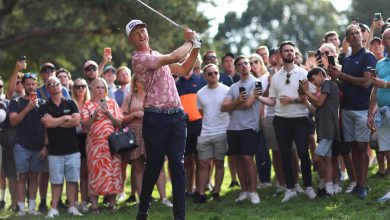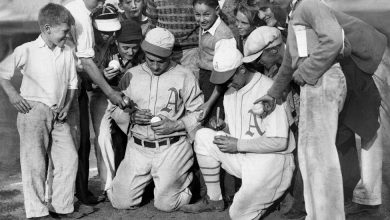These Are Not Larry Bird’s Celtics. And That’s Just Fine.

When Bill Walton revived and concluded his N.B.A. career with the Boston Celtics, he devised a plan on game nights to beat the city’s notoriously gridlocked traffic: He rode the subway to work.
Picture a towering, unmistakable redhead, 6-foot-11, boarding the T, as it is known in Boston, at the Harvard station. Walton lived nearby during the Celtics’ 1985-86 championship season, and in 1986-87, when they lost in the N.B.A. finals to the Los Angeles Lakers.
“Red Line to the Green Line to the old Garden,” he said. “And with a packed car of crazed fans banging on the walls and ceiling, rocking the car, chanting, ‘Here we go Celtics, here we go!’ ”
In a recent telephone interview, Walton added that after six injury-plagued years with the dysfunctional and Donald Sterling-owned Clippers of San Diego and Los Angeles, those rides were neither scary nor a culture shock for a West Coast native.
“It was heaven,” he said.
The old Boston Garden was replaced in 1995 by what is known now as TD Garden. But the bustling North Station commuter hub remains, reached by the T’s trolley cars clanging through tunnels old enough for archaeological digs.
So, too, exists the famed parquet playing floor, with a few holdover pieces from the original Garden: the now 23 retired jersey banners, a fair number of ruddy face ushers with Southie accents, and ticket scalpers hiding in plain sight out on Causeway Street.
“The new place doesn’t have the sightlines and overhang from the second tier, where we called the games from and had, in some ways, a better view than courtside,” said Marv Albert, the Hall of Fame broadcaster whose radio debut — Knicks at Celtics, Jan. 27, 1963 — was in Boston, subbing for Marty Glickman, at age 21.
He added: “The TD Garden is not a very glamorous arena, like what the Warriors built in San Francisco. And with the surrounding area and the Celtics’ history, there is still an old-time feel to it.”
To that end, when the N.B.A. finals return to Boston for the first time since 2010 — with the aforementioned Golden State Warriors hitting town for Game 3 Wednesday night — it will be the league’s version of strolling the somewhat gentrified but still old neighborhood, making the nostalgic rounds of where it grew up.
It wasn’t until years after the Bill Russell-era Celtics won 11 titles from 1957 through 1969 that professional basketball became a hot ticket in Boston, or anywhere in the United States, much less a sexy global sell. But it was largely at North Station, that nexus of unwieldy urban design, that the N.B.A. progressed from crawl to walk.
It has been a rough few years, the losses of the Retired Number Celtics painful and profound for those who remain from Boston’s unmatchable dynastic period. John Havlicek, No. 17, died in 2019; K.C. Jones (25), and Tom Heinsohn (15) passed in 2020; Sam Jones (24) in 2021; Jo Jo White (10), a 1970s star on two title teams, in 2018.
Still, Dan Shaughnessy, the venerable Boston Globe columnist, checked in recently with Bob Cousy (No. 14), who told him, “To have this happen at the age of 93 is really a special moment.” He meant the Celtics’ 22nd championship series, of which they’ve won 17, deadlocked with the Lakers franchise that originated in Minneapolis.
No awe-struck neophyte, Shaughnessy was nonetheless moved by the trophy presentations after the Celtics’ narrow escape from Miami in Game 7 of the Eastern Conference finals. There was Cedric Maxwell, a Celtics broadcaster and retired No. 31, handing the conference championship trophy, named for Cousy, to the veteran forward Al Horford. Then, Maxwell passed the new conference most valuable player trophy, named for Larry Bird, over to the Celtics’ ascendant star, Jayson Tatum.
“Where else do you get that?” Shaughnessy said before answering his question. “The Yankees in baseball.”
For a generation of sports journalists too young to have covered the Celtics’ patriarch Red Auerbach’s lighting of victory cigars from his coaching perch, the 1980s Bird-era Celtics were our introduction to live Celtics lore.
In chairs fit for third-graders along the baselines, we watched the Lakers and Celtics dramatically raise the league’s profile through the lens of the rivalry between Magic Johnson and Bird. Reporters from out of town slept in a new chain hotel at Copley Square, awakened by earsplitting alarms one early June morning that we swore were the devious work of Auerbach — because the Lakers stayed there, too.
We cringed as jubilant fans rushed the court after the Celtics won Game 7 of the 1984 finals and wondered if Bird and company — not to mention the Lakers — would get out alive. We risked being suffocated or crushed in horribly ventilated visitors’ locker rooms that were no match for the growing news media mob.
We walked out, exhausted from the building’s oppressive late-spring humidity, dodging the occasional rat, still thinking there was no place else we would rather be.
Walton’s memories of all being on board the clanging T notwithstanding, those Celtics did not represent all of Boston. Through the massive good fortune of landing Bird (retired No. 33) in the college draft and smartly trading for the rights to Kevin McHale (32), but also by stocking their bench with fringe white players, the Celtics were perceived as the reputed holdout in a league increasingly dominated by African American talent. Black neighborhoods in Boston preferred their rivals, Julius Erving’s Philadelphia 76ers or Johnson’s Lakers.
But the Celtics, whose principal talent, at least, has for years been predominately Black, played this season to 100-percent home capacity. The fan base in Boston is presumably finding this team of throwback bruising defenders all the more relatable and is more united than ever — though visiting players of color may argue that it is merely mega-partisan, not postracial.
There is always temptation to overstate comparisons to champions of yore, especially when remembering that the Celtics have won exactly one championship since 1986. But some have pointed out that the rugged point guard Marcus Smart evokes memories of K.C. Jones and Bird’s 1980s running mate, Dennis Johnson (retired No. 3). And while Tatum may never be Bird in the collective mind of the Boston masses, he, at 24, appears destined to have his number, 0, join Robert Parish’s 00 in the rafters.
After all, it took one title, in 2008, for Kevin Garnett (retired No. 5) and Paul Pierce (34) to make it.
The current center, Robert Williams III, is no Russell (retired No. 6), but he, at 24, is a genuine, homegrown rim protector. Horford, who plays in the image of the 1970s glue guy Paul Silas, was reacquired last off-season, the kind of canny team-building addition the Celtics were known for across four decades of winning multiple titles.
Having lost the one premier player they signed, Gordon Hayward, to free agency in 2020, and Kyrie Irving, the best player they traded for, also to free agency, in 2019, these Celtics were more or less put together no differently from any Auerbach team. Danny Ainge, the former general manager, did the heavy lifting with much help from the Nets, whose draft picks heisted in a 2013 trade for the fading Pierce and Garnett brought Tatum and his co-star, Jaylen Brown.
So, too, are the current Warriors constructed without the benefit of a boutique free agent, after the 2019 departure of Kevin Durant. This series is a welcome variation on the theme of willful stars determining competitive balance, a wielding of leverage that has turned off some fans and that some people have come to see as harmful to the league.
These Celtics of course play in the same 3-point shooting universe that’s been stylistically expanded by Golden State’s Stephen Curry more than anyone, another trend found objectionable by many older fans. And TD Garden is no different from other N.B.A. arenas with upgraded culinary delights and the standard in-game experience of floor-show gimmickry and nonstop noise that once made Auerbach’s head and cigar explode.
Walton would rather remember the fans reaching a frenzied state on their own, en route on the Green Line. From his home in San Diego, he said, “Knowing Boston, I’m pretty sure nothing has changed.”





